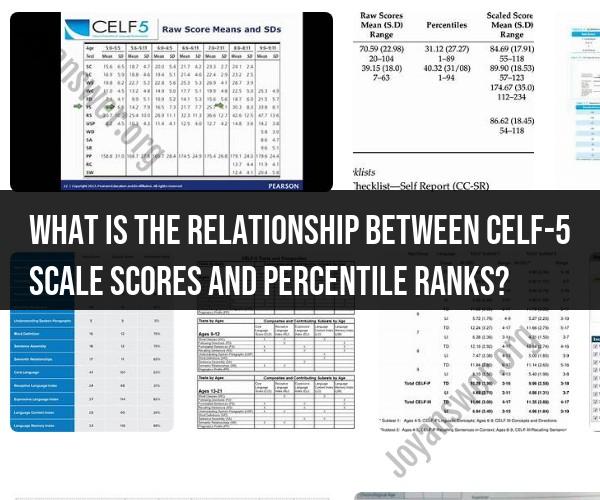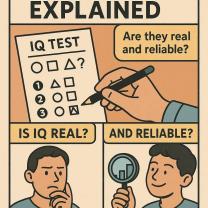What is the relationship between celf-5 scale scores and percentile ranks?
The Clinical Evaluation of Language Fundamentals, 5th Edition (CELF-5), is a standardized assessment tool used to evaluate a person's language skills, including receptive and expressive language abilities. The relationship between CELF-5 scale scores and percentile ranks is essential to understand how an individual's performance compares to that of a larger group of people of the same age.
Here's how the relationship typically works:
Scale Scores: The CELF-5 yields several scale scores, each corresponding to a specific subtest or aspect of language (e.g., Core Language Score, Expressive Language, Receptive Language, etc.). These scale scores are typically reported on a scale with a mean (average) of 10 and a standard deviation of 3. This means that the average score for a particular age group is set at 10, and the standard deviation is 3 points.
Percentile Ranks: To provide a more understandable interpretation of the scale scores, CELF-5 also provides percentile ranks. Percentile ranks represent the percentage of individuals in a normative sample who scored at or below a particular scale score. For example, if a child's scale score on a subtest is at the 75th percentile, it means that the child performed as well as or better than 75% of the individuals in the normative sample of the same age.
Interpretation: The relationship between scale scores and percentile ranks allows for a straightforward interpretation of a person's performance. A scale score of 10 is considered average for the individual's age group. A scale score below 10 indicates performance below the average, while a score above 10 indicates performance above the average. The corresponding percentile rank provides information on how the individual's performance compares to their peers.
For example, if a child receives a Core Language Score of 13 on the CELF-5, it means that their performance is above the average (set at 10), and their percentile rank will indicate where they fall compared to others in their age group. If their percentile rank is 75, it means they performed as well as or better than 75% of children in the normative sample.
It's important to note that interpreting CELF-5 scores should be done by qualified professionals, such as speech-language pathologists or clinical psychologists, who are trained to assess and interpret language skills comprehensively. Additionally, percentile ranks should be considered alongside other relevant information, such as clinical observations and history, to make informed decisions about a person's language abilities and potential intervention needs.
Understanding CELF-5 Scale Scores and Percentile Ranks: A Guide
The CELF-5 (Clinical Evaluation of Language Fundamentals-Fifth Edition) is a standardized test that is used to assess language skills in children and adolescents aged 5 to 18 years old. The CELF-5 includes subtests that measure a variety of language skills, including receptive language, expressive language, and oral language processing.
Interpreting Results: Making Sense of CELF-5 Scale Scores and Percentiles
CELF-5 scale scores are reported on a scale of 40 to 160. The average scale score is 100, and a standard deviation of 15 points is used. This means that approximately 68% of children will have a scale score between 85 and 115.
CELF-5 percentile ranks are used to compare a child's performance to the performance of other children in their age group. A percentile rank of 50 means that the child performed as well as 50% of their peers. A percentile rank of 75 means that the child performed better than 75% of their peers.
Navigating Assessment Data: The Relationship Between CELF-5 Scale Scores and Percentile Ranks
The following table shows the relationship between CELF-5 scale scores and percentile ranks:
| Scale Score | Percentile Rank |
|---|---|
| 40-74 | 2nd-15th |
| 75-84 | 16th-31st |
| 85-115 | 32nd-68th |
| 116-129 | 69th-84th |
| 130-160 | 85th-98th |
It is important to note that CELF-5 scale scores and percentile ranks are just one piece of information that should be used to assess a child's language skills. Other factors, such as the child's developmental history, academic performance, and behavioral observation, should also be considered.
How to use CELF-5 scale scores and percentile ranks
CELF-5 scale scores and percentile ranks can be used for a variety of purposes, including:
- To identify children who may be at risk for language learning disabilities
- To track a child's progress over time
- To make decisions about educational placement and intervention services
- To communicate with parents and other professionals about a child's language skills
Conclusion
CELF-5 scale scores and percentile ranks are valuable tools for understanding a child's language skills. However, it is important to remember that they are just one piece of information that should be used to make decisions about a child's education and development.













